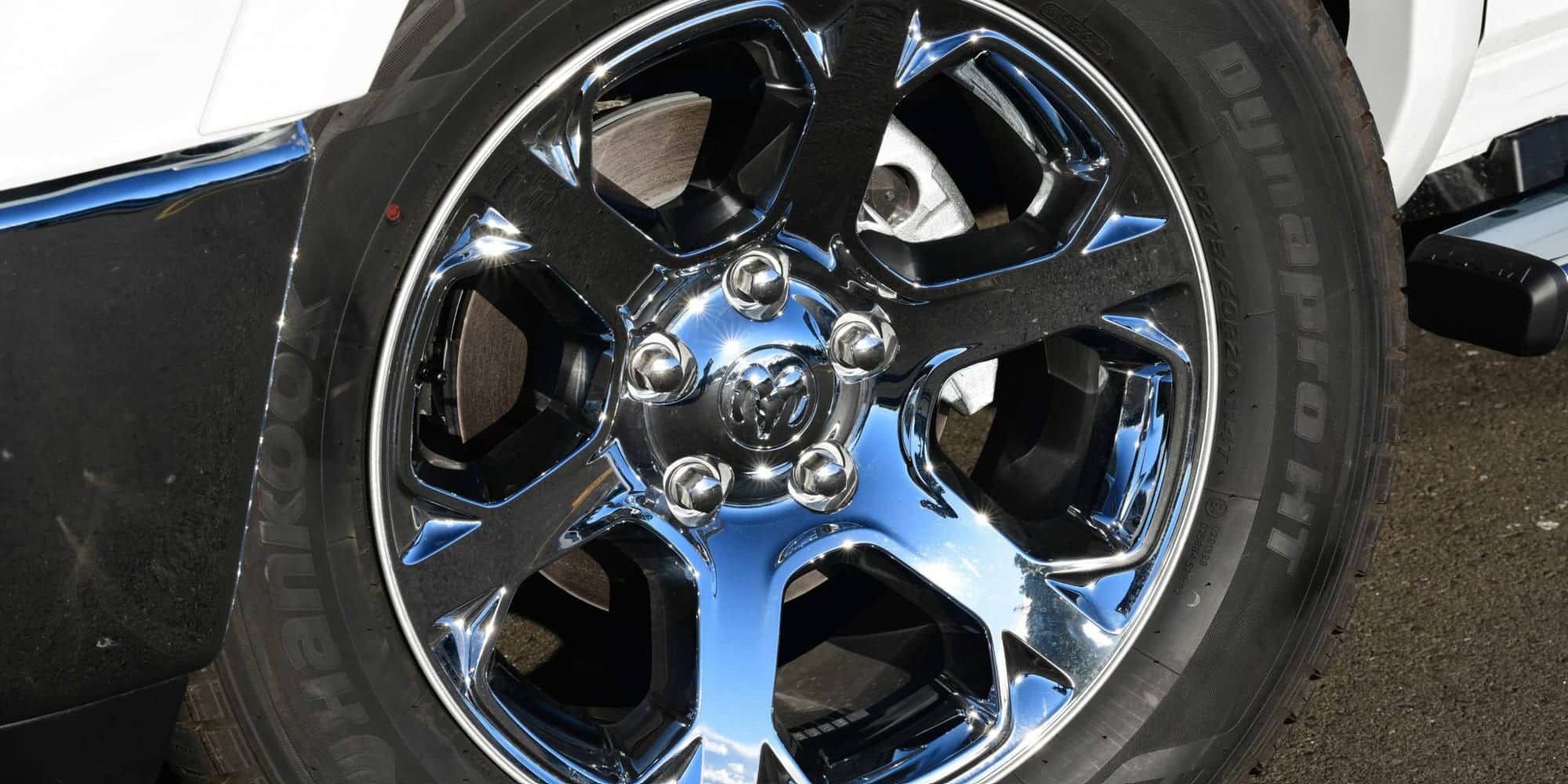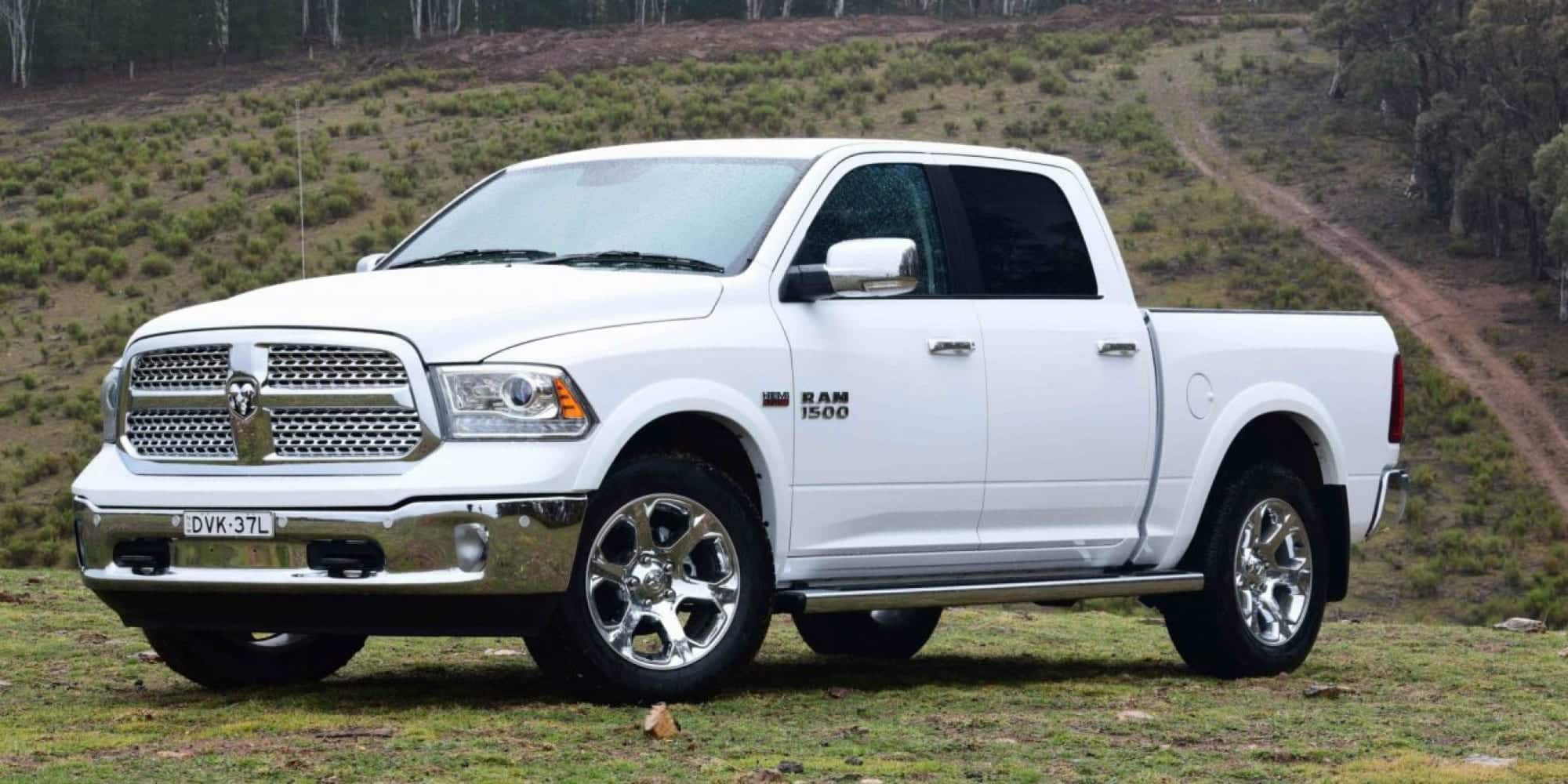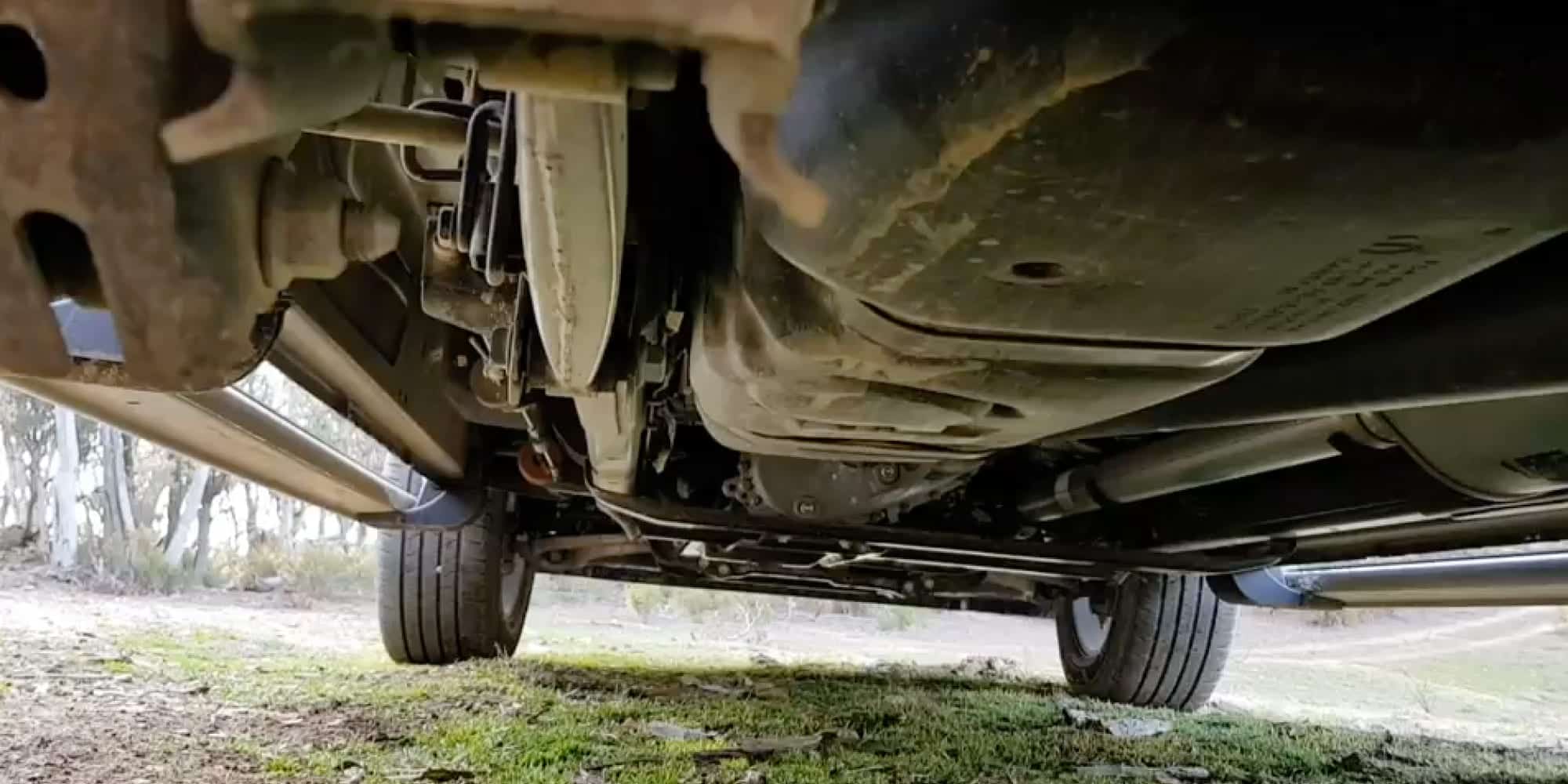If you’re fed up with low-capacity, high-strung diesels, then this yank tank is just the ticket
In a sea of low-capacity, highly strung diesel utes with all manner of emissions controls hanging off them, the RAM 1500 turns up to the ute scene like it’s rocking up to a 1st birthday party with a beer bong and arseless chaps, screaming “Woooooooo!”. It’s not really acceptable behaviour to most, it’s downright offensive to some, but it is kind of endearing and a breath of fresh air.
Every time you write a story about a new ute sporting an engine under three litres, the chorus of disenchantment in the comments always stays the same; Dairy Farmers and Orchy have never had so many shoutouts via car reviews.
CLICK HERE TO READ THIS 2019 RAM 1500 REVIEW IN OUR ONLINE MAGAZINE
Well, it’s time to stop (or at least slow) your bickering. The RAM 1500 has landed in Australia, sporting a 5.7-litre Hemi V8 under the bonnet, making 291kW @ 5600rpm, and 556Nm @ 3950rpm.
In top-spec Laramie form, you can buy the 1500 for just shy of a hundred grand. There’s also an Express spec, which comes with less bells and whistles, and a longer tub (at the expense of cab size). For those with a more limited budget, the Express costs only $80,000.
How does it go on-road?
Driving a car with a big petrol V8 feels like such an indulgence these days. It’s a great engine, more than happy to rev up to as well as lug along at 1500rpm (or lower). It’s barely perceptible at idle, and although you can tell it is tuned to try and scavenge as much economy as possible, it still responds smartly to big throttle inputs. I reckon this is mostly due to the gearbox, an eight-speed TorqueFlite unit that harnesses the powerplant well while also staying smooth.
The engine is fairly muted overall, only progressing into a civilised howl when the revs really rise up. It makes for a fairly refined overall experience.
Although noticeably smaller and substantially lighter than a ‘heavy duty’ RAM 2500 or 3500, you can still feel the size of the 1500 to a degree. You’ll soon learn to watch your passenger mirror to check where your location is on the road, and while the turning circle isn’t downright atrocious, it would still be a handful on tight tracks and in carparks.

So, how much fuel does it really use?
We can’t give you a 100% answer on this one yet, as we’ve only been able to run the car for around 150km or so, through NSW central-west country roads. We were driving it with a combination of both easy cruising and big throttle inputs. After that, the on-board computer was reading between 13 and 14 litres per hundred kays. We’ll hold off on a full verdict until we put a full tank through the 1500 later.
The Hemi V8 does have a few tricks up its sleeve when trying to lower fuel consumption. Firstly, it’s got a system of cylinder deactivation called ‘Fuel Saver Technology’. The engine turns itself into a V6 and V4 when engine loads are low, hydraulic valve lifters shutting off cylinders completely. It works really well; you only notice the drop in cylinders because of the green ‘ECO’ highlight on the dash. Mash the throttle, and it seamlessly transforms back to that voracious V8 we all love.
Another trick the RAM 1500 has is ‘Active Grille Shutters’. They’re like a venetian blind bolted onto the front of your radiator that control the amount of air flowing through the radiator and into the engine bay. When you’re cruising along the highway, you don’t need maximum airflow. So the shutters close up and your drag coefficient is improved, and your engine holds a more efficient operating temperature.
The guys at RAM tell us the Hemi-powered 1500 is capable of 9.9 litres per hundred kilometres with the more efficient 3.21:1 diff ratio (and 3.5-tonne towing capacity). With the shorter 3.92 ratio and 4.5-tonne towing, you’re looking at 12.2 litres per hundred kilometres. 9.9 litres sounds amazing, and is probably entirely feasible. It’s also technically possible for me to give up beer and pizza for a year. Possible, but highly unlikely.
How does it go off-road?
Unfortunately, I can’t give you a thorough answer on this one yet. Our off-road loop was quite tame, with only basic paddocks to cruise around in. My one chance to cross-axle the 1500 was defeated by wheelbase, and what seemed to be quite a supple rear end. It’s a coil-sprung five-link rear end, by the way, with plenty of space between the axle and bump stop.
Beyond really testing out what tractive capability is like, I’ll fill you in on the rest: approach and departure angles aren’t wonderful, thanks to the bulging bodywork at the corners. Ramp-over angle is also not great, owing to the wheelbase and side steps that destroy any semblance of sill clearance. Tyres are a good size (275/60 R20), but 20-inch wheels aren’t great for off-road, and the tyre pattern has a strong on-road bias. Brake discs aren’t gigantic, however, so you should be able to fit an 18-inch, or maybe a 17-inch wheel on there. It’s a part-time 4WD setup, with no locking differential in sight. How effective the big rig is off-road will really depend on how well tuned the off-road traction control system is.

What about towing?
Unfortunately, this is another shoulder-shrugger for us. All of our driving so far has been unladen, and with nothing hanging off the back. But, what I can do is help you decipher the specs sheet.
Towing capacity of the RAM 1500 is either 3500kg with the more efficient 3.21:1 differential ratio, while the 3.92:1 ratio setup gets 4500kg, something no other ‘normal’ ute can manage. It’s also nice that the 1500 can give you readouts on tyre pressures, transmission and engine oil temps, as well as oil pressure.
But, my fine readers, you know as well as I do talking big on paper doesn’t always mean it’s going to cut the mustard in the real world. We’ll hold our full verdict until that’s the case. But, it’s worth noting the rest of the weights.
The Laramie as tested has a 2650kg kerb weight, which is around 300-400kg heavier than the utes this unit is looking to compete with. With a 3450kg GVM, you’ve got a straight 800kg of payload to play with. It’s not huge, and is less than most other top-spec’d dual-cabs.
But, what about the all-important GCM? That varies, according to your towing capacity (and diff ratio). With 4.5-tonne towing, you’ve got a combination ceiling of 7237kg. When you’re towing the full amount, you have less than 100kg of payload leftover. Not great, but hey, 4.5 tonnes is a bloody heavy trailer. If your trailer is that heavy and you’re complaining about not having any payload in your ute, you’ve probably got bigger fish to fry.

Where the 4.5-tonne ute does make sense is towing a 3.5-tonne trailer. You’re nowhere near your towing limit, which is smarter and safer. And, you’ve still got your full ute payload to access before worrying about the overall GCM. Fuel consumption aside, this makes the RAM 1500 a vastly superior tow vehicle compared to most other 4X4 utes. You’ve even got a bit of room for accessories!
If you’re buying the RAM Laramie not to tow, I get it. Not really, but whatever. You just want to upstage old mate next door with his pissy little diesel Wildtrak, and have ultimate bragging rights at the next session at the pub or around the barbeque. Don’t worry, I won’t tell anyone. But, you’re best-off looking at the 3.21:1 unit.
You’ve got the same payload, but only towing 3.5 tonnes means your GCM is reduced to 6261kg. This means with a maxxed out trailer, your leftover payload is only 111kg. In other words, put your passenger and bags on the scales to check you’re not over. Leave this option to towing light stuff, and you’ll be fine.
And how much fuel is it going to use when lugging and towing? We’re keen to find out.
Stay tuned for more
We’re very keen to find out three very important things about the RAM 1500: how much fuel does it really use? How does it really go off-road? And how does it go loaded up and towing? These are all questions we weren’t able to really find out on our first drive, but something we’ll look to cover in the future. Stay tuned.












